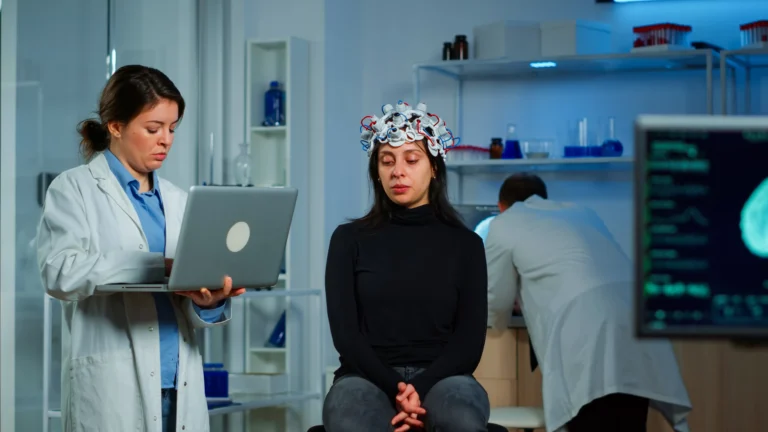Neurological symptoms can range from mild, fleeting sensations to life-threatening emergencies. Because the nervous system controls every function in your body, movement, sensation, cognition, and autonomic processes, any warning sign should be treated with seriousness.

• Description: A headache reaching maximal intensity within seconds (“worst headache of my life”).
• Why It’s Alarming: Suggests subarachnoid haemorrhage (bleeding around the brain), cerebral venous thrombosis, or a hypertensive crisis.
• Action: Call emergency services immediately. Require CT scan/MRI and neurosurgical evaluation.
• Description: Sudden loss of strength or sensation, especially on one side of the body (face, arm, or leg).
• Why It’s Alarming: Classic sign of ischemic or hemorrhagic stroke. “Time is brain” every minute counts to restore blood flow.
• Action: Activate stroke protocol (“FAST”: Face drooping, Arm weakness, Speech difficulty, Time to call). Immediate transport to the stroke centre.
• Description: Sudden drowsiness, confusion, stupor, or unresponsiveness. Can range from mild disorientation to full coma.
• Why It’s Alarming: May indicate raised intracranial pressure (tumour, haemorrhage), metabolic derangements, infection (meningitis/encephalitis), or seizures.
• Action: Urgent evaluation in the emergency department; requires neuroimaging, blood tests, and lumbar puncture in some cases.
• Description: Unprovoked convulsions, staring spells, or unusual repetitive movements in someone with no epilepsy history.
• Why It’s Alarming: Could signal brain tumour, stroke, infection, autoimmune encephalitis, or metabolic imbalance.
• Action: Seek immediate medical care; EEG and MRI to determine cause; initiate anticonvulsant therapy as needed.
• Description: Loss of vision in one eye, double vision, sudden visual field defect (e.g., “curtain falling” over vision).
• Why It’s Alarming: May represent optic neuritis (multiple sclerosis), retinal artery occlusion (stroke of the eye), or pituitary apoplexy.
• Action: Same-day ophthalmological and neurological evaluation; MRI and vascular studies.
• Description: Description: Slurred speech, inability to find words (expressive aphasia), or difficulty understanding others (receptive aphasia).
• Why It’s Alarming: Strong stroke warning sign; lesions in the dominant hemisphere (Broca’s/Wernicke’s areas).
• Action: Emergency stroke assessment, CT/MRI, possible thrombolysis if within the window.
• Description: Inability to flex the neck forward, headache, photophobia, high fever.
• Why It’s Alarming: Meningitis or encephalitis; bacterial forms can progress rapidly to brain damage or death.
• Action: Immediate hospital admission, blood cultures, lumbar puncture, and empirical IV antibiotics.
• Description: Ataxia (unsteady walking), tremors, vertigo, difficulty with fine movements.
• Why It’s Alarming: Could reflect cerebellar stroke, tumour, multiple sclerosis, or degenerative disorders.
• Action: Neurological evaluation with imaging (MRI brain/spine) and vestibular testing.
• Description: Sudden onset of back pain radiating into legs or arms, with weakness, numbness, or bowel/bladder dysfunction.
• Why It’s Alarming: Spinal cord compression—emergency if cauda equina syndrome (saddle anaesthesia, incontinence).
• Action: Urgent MRI spine and neurosurgical consultation to prevent permanent paralysis.
• Description: Rapid changes in memory, judgment, or personality over weeks to months.
• Why It’s Alarming: Could indicate dementia types (Alzheimer’s, vascular dementia), normal pressure hydrocephalus, or treatable causes (vitamin deficiencies, thyroid disease).
• Action: Early neurological
Neurological symptoms not to ignore span a wide spectrum—from the sudden, severe “thunderclap” headache that heralds a possible brain haemorrhage to the gradual cognitive decline that may signal an underlying neurodegenerative process. Prompt recognition and swift medical evaluation can mean the difference between full recovery and lasting impairment.
Service Road, Ghodbunder Rd, next to AP Shah Institute of Technology, Kasarvadavali, Thane West, Maharashtra 400615
Pioneering Excellence in Neurology and Neurosurgery with Cutting-Edge Technology and Compassionate Care. Solaris Hospital is your one-stop destination for comprehensive with wide range of multi-specialty services.
Service Road, Ghodbunder Rd,
next to AP Shah Institute of
Technology, Kasarvadavali,
Thane (West),
Maharashtra. 400615
Phone:+91 22 4004 4001 / 4004 4003 / 8655696500
E-mail:contact@solarishospitals.com
